Mon 23 / 11 / 15
Creating collaborative workspaces
I was asked to write a blog about my experience creating collaborative workspaces. I’m just about to launch a new space in Brighton, St Martin’s Campus, and so it was a good time to reflect on how where my thinking has got to.
At the start of 2014 I wanted to create a better working environment for my agency, Bloom. My colleague spotted a dreary looking office in the basement of Lees House and I set about creating the perfect collaborative work zone.
Armed with these words of wisdom from Jonathan Markwell at The Skiff, and reading articles such as 'Do Collaborative Workspaces Work?' I was almost ready to go.
I collected data on everyone based on their Myers-Briggs types and some well-informed questions. From this I designed an office that would work open plan for the extroverts and spaces where introverts could go and get on with their work. So I created loud and quiet zones.
We had more introverted style workers that seemingly wouldn’t work well in an interactive environment. I saw it as they needed to think about a problem and come back with solutions rather than requiring endless collaborative meetings to group solve.
I also wanted to make the office a place that was preferable to work at than home. The first creature comfort of that was an environment free of interruption - something that an open-plan collaborative workspace often lacks. So I created the library. The space was designated as a no meeting, no talking, no phone zone - like a normal library.
Another issue to resolve was how to make the hub creative, stimulating creativity and productivity, without hoping that a splash of primary colours will do the trick. A glance at the data again showed me the type of people that worked at Bloom. We were mainly agency types, with social media specialisms. What we needed was to mingle with others and make our bubble bigger.
We offered co-working space to others in return for doing some work for us. A mini social-media backlash happened, with some people complaining that freelancers were getting a raw deal akin to 19th Century workhouse. But we eventually publicly placated the naysayers and settled with a good collection of freelancers. The social media bubble was well and truly burst as we had PR folk, designers, developers, business consultants and others feely mingle, doing their work as well.
Almost 2 years later did the experiment work? The answer is its too early to tell. The library is effectively a store room and hardly ever used. It turned out that employees, if they had to be in the office, would rather sit with industrial ear blockers at their desks with “do not disturb” rather than go into a quiet space. We made a mistake of only looking for people to share our office with us who could potentially further Bloom’s cause, rather than be open to innovation in areas where we didn’t go or understand. There were some good businesses that we turned away that we could have enjoyed working alongside.
So what learnings am I taking with me?
1). The old office is outdated but a new office can’t resemble a fish-mash of ideas. It has to have a central theme as to why come and work there.
2). People need to interact but on their own terms. Bartering is good, but actually people should be in the office to work on their work and not be as a guest of another business.
3). Innovation matters, but make sure you get the basics right - powerful wifi and powerful coffee seem to be the two most important workspace items.
4). Increase your bubble to beyond just gaps you can see.
5). Make people happy.
Thanks to Jay Cooper, Founder of Bloom for writing this blog. Bloom is an insight-driven strategy agency with social media at its heart. To get in touch, email jay@bloomworldwide.com or call 01273732626.
You might also like:
If you want to contribute to the Chamber blog, contact us on hannah@brightonchamber.co.uk


